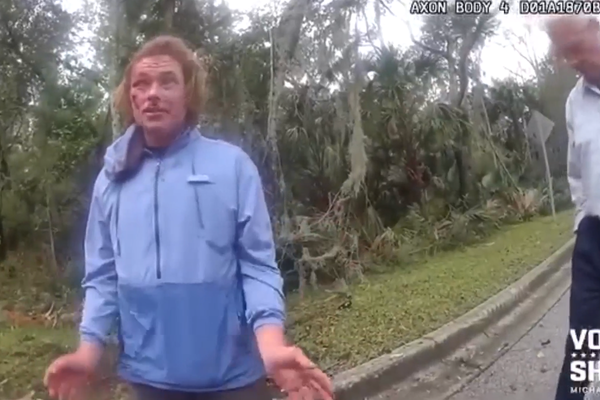
Images captured by a robotic probe inside one of the three melted reactors at the tsunami-wrecked Fukushima nuclear power plant showed exposed steel bars in the main supporting structure and parts of its thick external concrete wall missing, triggering concerns about its earthquake resistance in case of another major disaster.
The plant's operator, Tokyo Electric Power Company Holdings, has been sending robotic probes inside the Unit 1 primary containment chamber since last year. The new findings released Tuesday were from the latest probe conducted at the end of March.
An underwater remotely operated vehicle ROV-A2 was sent inside the Unit 1 pedestal, a supporting structure right underneath the core. It came back with images seen for the first time since an earthquake and tsunami crippled the plant 12 years ago. The area inside of the pedestal is where traces of the melted fuel could most likely be found.
An approximately five-minute video — part of 39-hour-long images captured by the robot — showed the 120-centimeter (3.9-foot) -thick concrete exterior of the pedestal was significantly damaged near its bottom, exposing the steel reinforcement inside.
TEPCO spokesman Keisuke Matsuo told reporters Tuesday that the steel reinforcement is seen largely intact but the company planned to further analyze data and images over the next couple of months in order to find out if and how the reactor's earthquake resistance can be improved.
The images of the exposed steel reinforcement have triggered concerns for the reactor's safety.
Fukushima Gov. Masao Uchibori urged TEPCO to “swiftly evaluate levels of earthquake resistance and provide information in a way prefectural residents can easily understand and relieve concern of the residents and people around the country.”
The footage taken by the robot also showed equipment that had slipped down as well as other types of debris, possibly nuclear fuel that fell from the core and hardened, piling up as high as 40-50 centimeters (1.3-1.6 feet) from the bottom of the primary containment chamber, company officials said.
Matsuo said the data collected from the latest probe will help experts come up with methods of removing debris and analyzing the 2011 meltdowns. TEPCO also plans to use the data to create a three-dimensional map of melted fuel and debris details, which would take about a year.
Based on data collected from earlier probes and simulation, experts have said most of the melted fuel inside Unit 1 fell to the bottom of the primary containment chamber, but some of it might have even fallen through into the concrete foundation — a situation that makes the already daunting task of decommissioning extremely difficult.
About 880 tons of fatally radioactive melted nuclear fuel remain inside three reactors. Robotic probes have provided some information but the status of the melted debris is largely unknown. The amount equals about 10 times the damaged fuel that was removed in the Three Mile Island cleanup following its 1979 partial core melt.
Trial removal of melted debris is expected to begin in Unit 2 later this year after a nearly two-year delay. Spent fuel removal from Unit 1 reactor's cooling pool is to start in 2027 after a 10-year delay. Once all the spent fuel is removed from the pools, the focus will turn in 2031 to taking melted debris out of the reactors.







